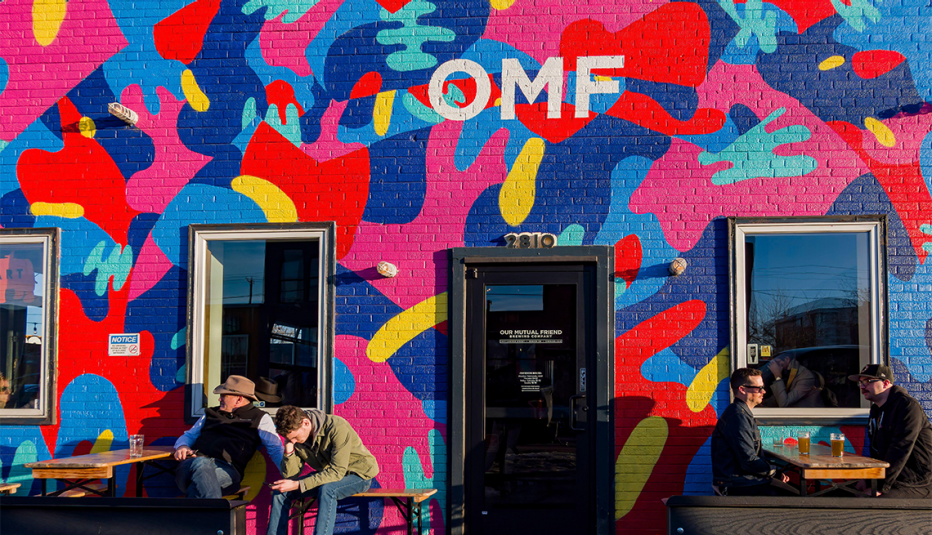AARP Hearing Center
Colorado’s capital was born as a gold rush city in 1858. The 21st century version is a modern metropolis of more than 3 million people. Denver wears its Old West heritage proudly, reflected in the 19th century architecture of downtown buildings including the Brown Palace Hotel and Spa and in events such as the annual National Western Stock Show and rodeo every January. But with that history comes a contemporary personality, obvious in top-flight dining, a booming performing arts culture, first-class museums and boutique shopping. With the Rocky Mountains as a backdrop, Denver attracts the outdoor-minded with miles of running, hiking and biking trails, public golf courses, large green spaces within the city and more. Yes, it is the gateway to the many ski towns and resorts dotted throughout the Colorado Rockies, but that’s another story. We’re talking about Denver, with tips to plan a great vacation in the city.
When to go
Denver has four distinct seasons and a mostly mild, sunny climate, notwithstanding the occasional newsmaking winter storm. The best touring weather is April through October. However, it can be 75 degrees at New Year’s and snowing at Easter, so you never know. The city is blessed with low humidity in the summer when outdoor concerts, neighborhood art, food and craft festivals and regular farmers’ markets are at their peak. That said, if schedules allow for a shoulder season visit, early spring and early fall are likely to offer more affordable hotel and transportation options and crowds are more manageable.
How to prepare for your trip
Pack for a casual city. Include layers to accommodate temperature variations (see above); comfortable shoes are a must for all the walking you are sure to do. Denver is not called the Mile High City for nothing. It is 5,280 feet high (the 13th step on the Colorado Capitol steps attests to its height), and it goes up from there. Take the altitude seriously. If you are not accustomed to spending periods of time at 5,000 feet above sea level and higher, you may experience altitude sickness. You may feel tired, light-headed or dizzy, develop a headache, loss of appetite or nausea all caused by a lack of oxygen in the altitude. Consider talking with your health care provider in advance about prevention and treatment. Remember that higher elevation exposes you to a higher percentage of UV rays from the sun than you get at sea level. Pack sunscreen.
How to get to Denver
Denver International Airport (DEN) is the third busiest in the U.S. (behind Atlanta and Dallas-Fort Worth). That makes it easy to find an airline that serves the city but requires traveler patience with lines for security, food and drink, baggage collection and, sometimes, for seats at your gate. Among the airlines that fly into Denver are American, United, Southwest and Delta, as well as Frontier, Spirit, JetBlue and international carriers such as British Airways and Air France. With approximately 35,000 employees, Denver’s airport is the size of a small city. The ongoing construction can make it confusing to navigate, so arrive early, check in online and pack snacks.
Drivers will find Denver on a crossroads of interstates, I-25 is the north-south route, I-70 goes east-west across Colorado. Denver is accessible by Amtrak on the California Zephyr route from San Francisco to Chicago.
Getting around
Driving is an option (rush-hour traffic can be brutal), but you can get around the city without a car because Denver’s Regional Transportation District (RTD) has a light rail system with 12 lines and 78 stations. It will get you from many areas of the city to the airport. RTD runs an expansive city bus line with the same fare structure as light rail: $5 for a local ride, $9 for regional and $20 to the airport. Free buses operate around the 16th Street Mall downtown — a big plus for shoppers.
Where to stay
The Brown Palace Hotel and Spa: For a unique high-end experience, stay downtown at the Brown Palace Hotel and Spa, which was designed and built starting in 1888 in Italian Renaissance style. You can’t help feeling as if you’ve stepped back in time when you arrive in the arched lobby. Public and private historical tours of the building can be booked by calling the hotel in advance. A room puts you close to some of Denver’s best boutique shopping at the 16th Street Mall and Larimer Square.
The Jacquard: The Jacquard in Cherry Creek is more modern than the Brown Palace, but it has a similar welcoming vibe. It’s close to retail shopping, great restaurants and the Denver Botanic Gardens. The rooftop pool is a great place to relax with a cocktail and take in views of the mountains. More luxury hotels include the Four Seasons Hotel Denver, the Ritz-Carlton and Hotel Clio.







































































